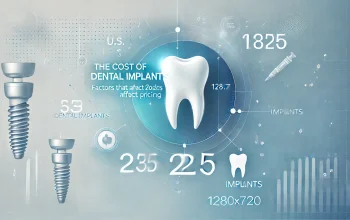5 Essential Exercises to Boost Your Health and Extend Your Lifespan

Living a long, healthy life is a goal shared by many, and exercise plays a crucial role in achieving this. Regular physical activity not only improves overall health but also extends life expectancy by reducing the risk of chronic diseases. Here are five exercises that can help you live a healthier, longer life.
Table of Contents
1. Walking: The Simplicity of Longevity
Walking is one of the most accessible and effective exercises for promoting long-term health. It’s easy to incorporate into daily routines and doesn’t require any special equipment.
Benefits:
- Cardiovascular Health: Walking helps improve heart health by strengthening the heart muscle, reducing the risk of heart disease and stroke.
- Weight Management: Regular walking aids in weight loss and helps maintain a healthy weight, reducing the risk of obesity-related conditions.
- Mental Well-being: Walking, especially in nature, reduces stress, anxiety, and depression, contributing to overall mental health.
How to Incorporate:
- Aim for at least 30 minutes of brisk walking most days of the week.
- Take short walks during breaks at work or opt for walking meetings.
- Use a pedometer or a fitness tracker to monitor your steps and gradually increase your daily count.
2. Strength Training: Building a Stronger Future
Strength training, or resistance training, involves exercises that improve muscle strength and endurance. It’s vital for maintaining muscle mass, especially as you age.
Benefits:
- Muscle Preservation: As we age, we naturally lose muscle mass. Strength training helps counteract this loss, keeping muscles strong and functional.
- Bone Density: Lifting weights or using resistance bands increases bone density, reducing the risk of osteoporosis and fractures.
- Metabolic Boost: Strength training boosts metabolism, helping with weight management and reducing the risk of metabolic disorders like diabetes.
How to Incorporate:
- Perform strength training exercises 2-3 times a week, targeting all major muscle groups.
- Start with bodyweight exercises like push-ups, squats, and lunges before progressing to weights or resistance bands.
- Focus on proper form to prevent injuries and maximize benefits.
3. Yoga: Flexibility and Mind-Body Harmony
Yoga is an ancient practice that combines physical postures, breathing exercises, and meditation. It’s a holistic approach to health that benefits both the body and mind.
Benefits:
- Flexibility and Balance: Yoga improves flexibility and balance, which are essential for preventing falls and maintaining mobility as you age.
- Stress Reduction: The meditative aspect of yoga promotes relaxation, reduces stress, and lowers cortisol levels, which can help prevent chronic diseases.
- Joint Health: Yoga’s gentle movements help keep joints healthy and improve range of motion, which is particularly beneficial for those with arthritis.
How to Incorporate:
- Practice yoga 2-3 times a week, starting with beginner-friendly poses like the mountain pose, downward dog, and child’s pose.
- Consider joining a class or using online resources to guide your practice.
- Focus on your breath and mindfulness to enhance the mental health benefits of yoga.
4. Cycling: Pedal Your Way to Longevity
Cycling is a low-impact exercise that’s great for cardiovascular health, muscle strength, and mental well-being. Whether you prefer outdoor biking or using a stationary bike, cycling offers numerous health benefits.
Benefits:
- Cardiovascular Fitness: Cycling strengthens the heart and improves circulation, reducing the risk of heart disease and high blood pressure.
- Joint-Friendly: Unlike running, cycling is easier on the joints, making it a suitable option for people with joint pain or arthritis.
- Mental Health: Cycling, especially outdoors, can improve mood, reduce stress, and boost mental clarity.
How to Incorporate:
- Aim for 30-60 minutes of cycling 3-5 times a week, depending on your fitness level.
- Incorporate cycling into your daily routine by commuting to work or running errands by bike.
- For a more intense workout, try interval cycling, alternating between high-intensity sprints and slower-paced recovery periods.
5. Swimming: The Ultimate Full-Body Workout
Swimming is a full-body workout that offers cardiovascular, strength, and flexibility benefits all at once. It’s particularly beneficial for individuals with joint issues or those recovering from injuries.
Benefits:
- Cardiovascular and Muscular Strength: Swimming engages all major muscle groups while improving heart health, making it a highly efficient exercise.
- Low-Impact: The buoyancy of water reduces stress on the joints, making swimming an ideal exercise for people with arthritis or those recovering from injuries.
- Lung Capacity: Swimming improves lung capacity and respiratory function, which is beneficial for overall cardiovascular health.
How to Incorporate:
- Swim for 30-60 minutes, 2-3 times a week, focusing on different strokes like freestyle, breaststroke, and backstroke for a balanced workout.
- If you’re new to swimming, consider taking lessons to improve your technique and confidence in the water.
- For variety, try water aerobics or swimming with resistance equipment like kickboards or pull buoys.
Conclusion: The Path to a Healthier, Longer Life
Incorporating these five exercises into your routine can significantly enhance your health and longevity. Consistency is key—make physical activity a regular part of your life to reap the long-term benefits. Whether you start with walking, add in strength training, practice yoga, cycle, or swim, each of these exercises contributes to a healthier, more active lifestyle that can help you live a longer, fuller life.
By focusing on a balanced exercise regimen that includes cardiovascular, strength, and flexibility training, you’re not only investing in your physical health but also improving your mental well-being. So, lace up your walking shoes, roll out your yoga mat, or hop on your bike—your journey to a healthier, longer life starts today.


